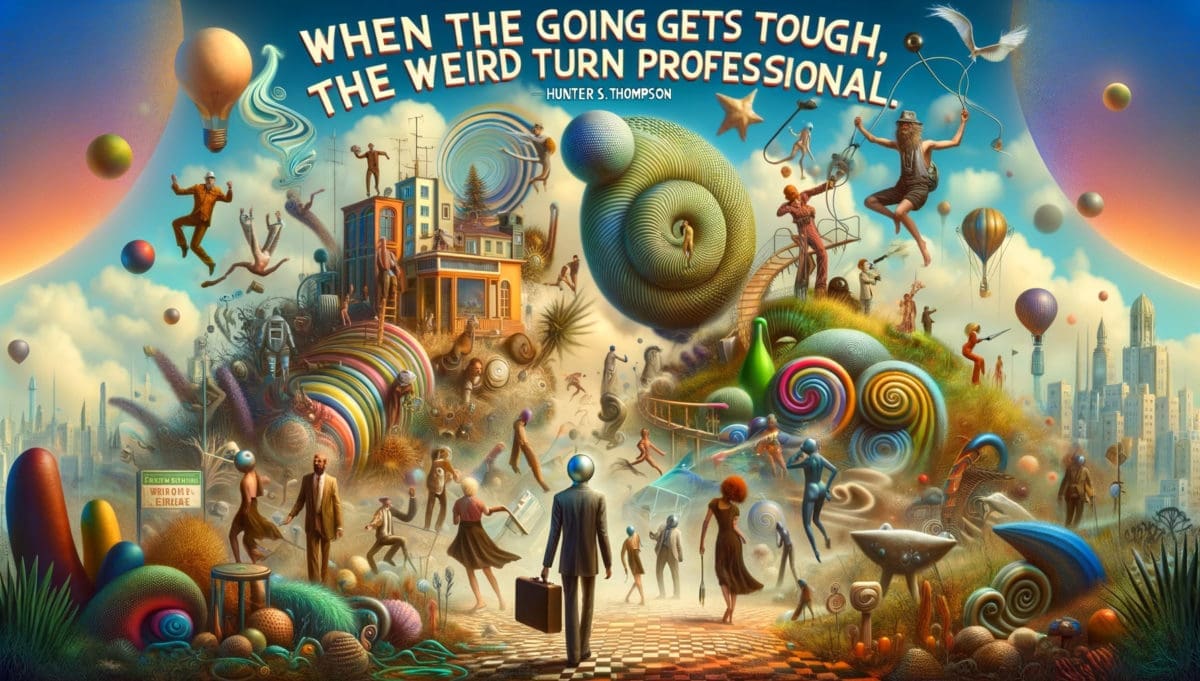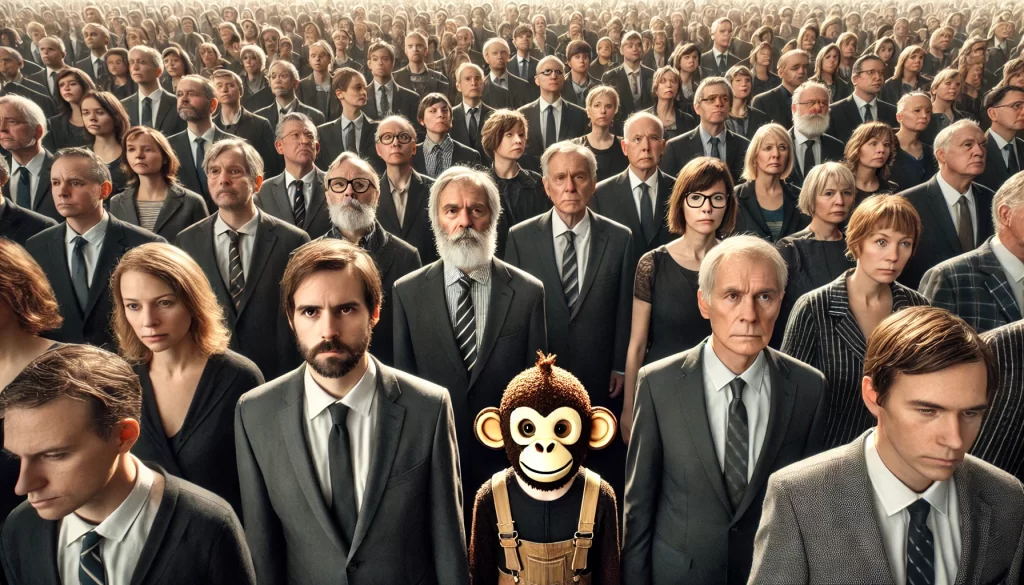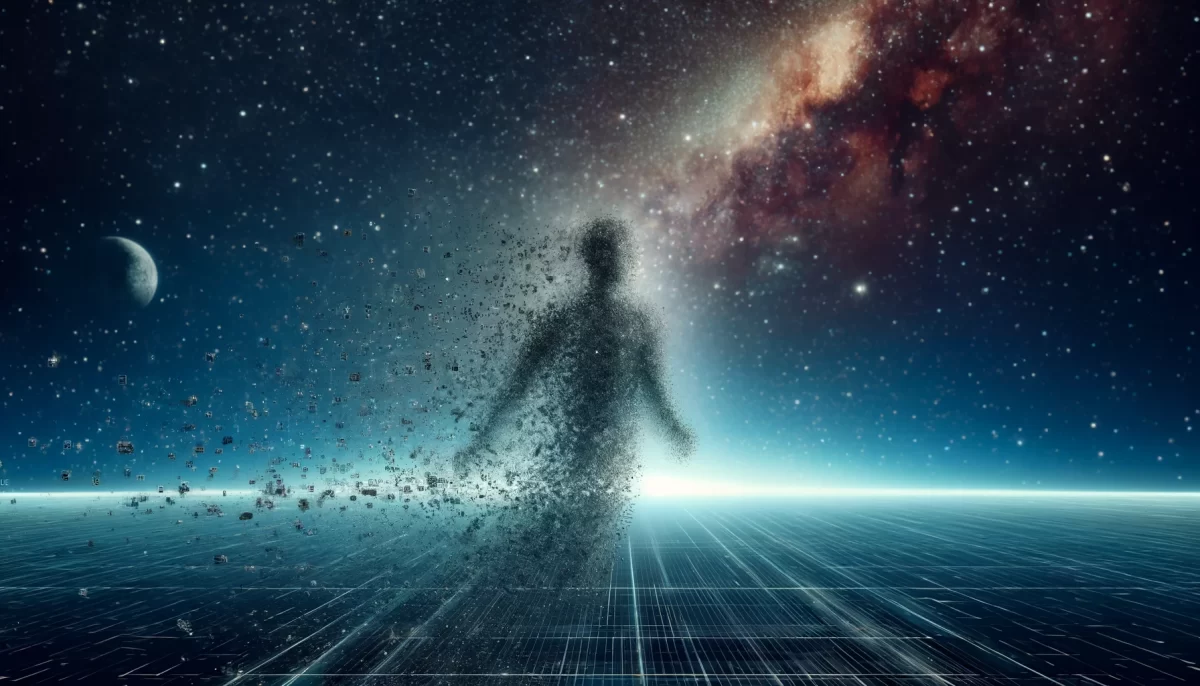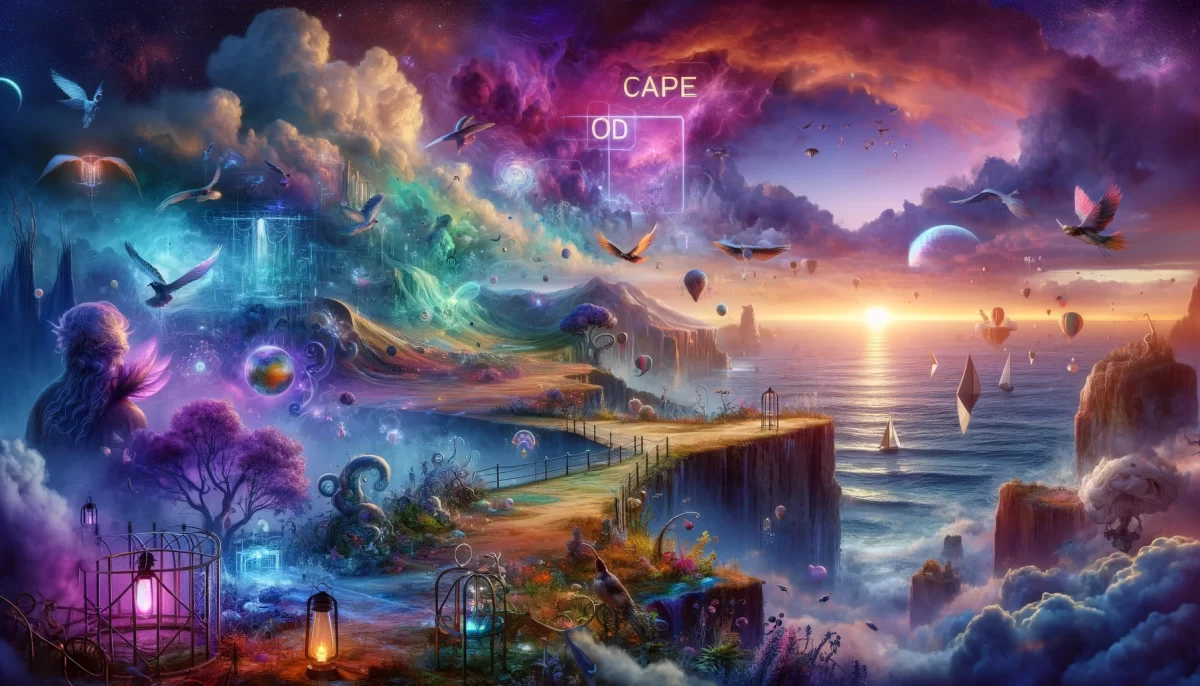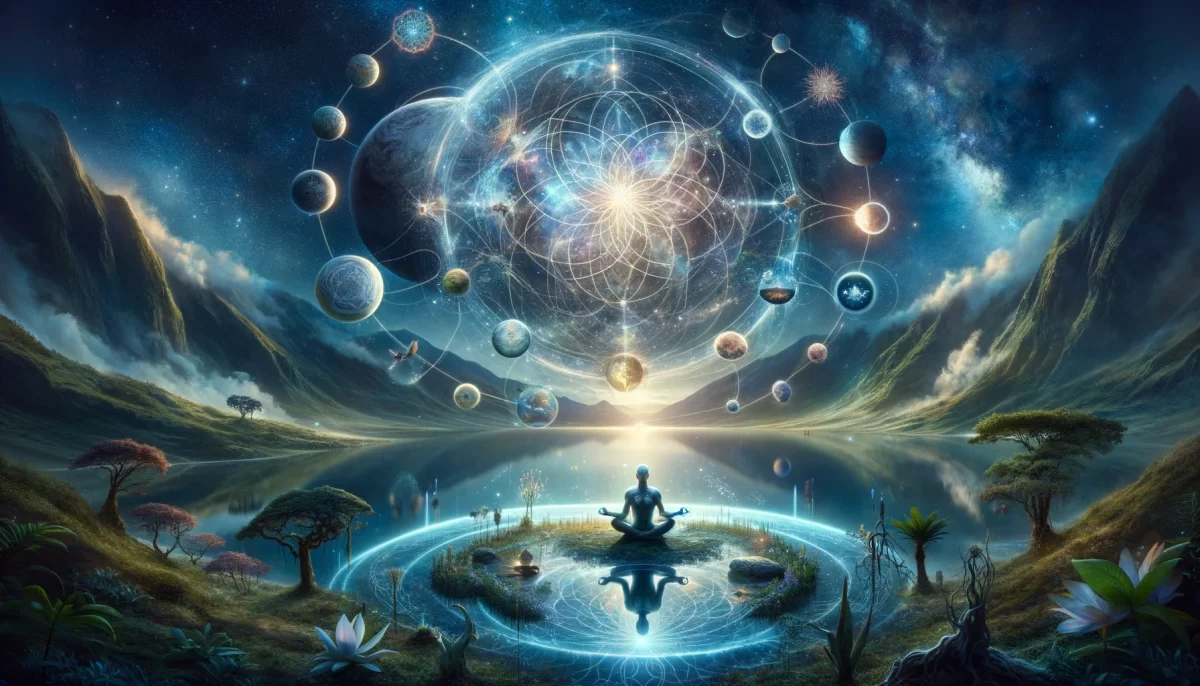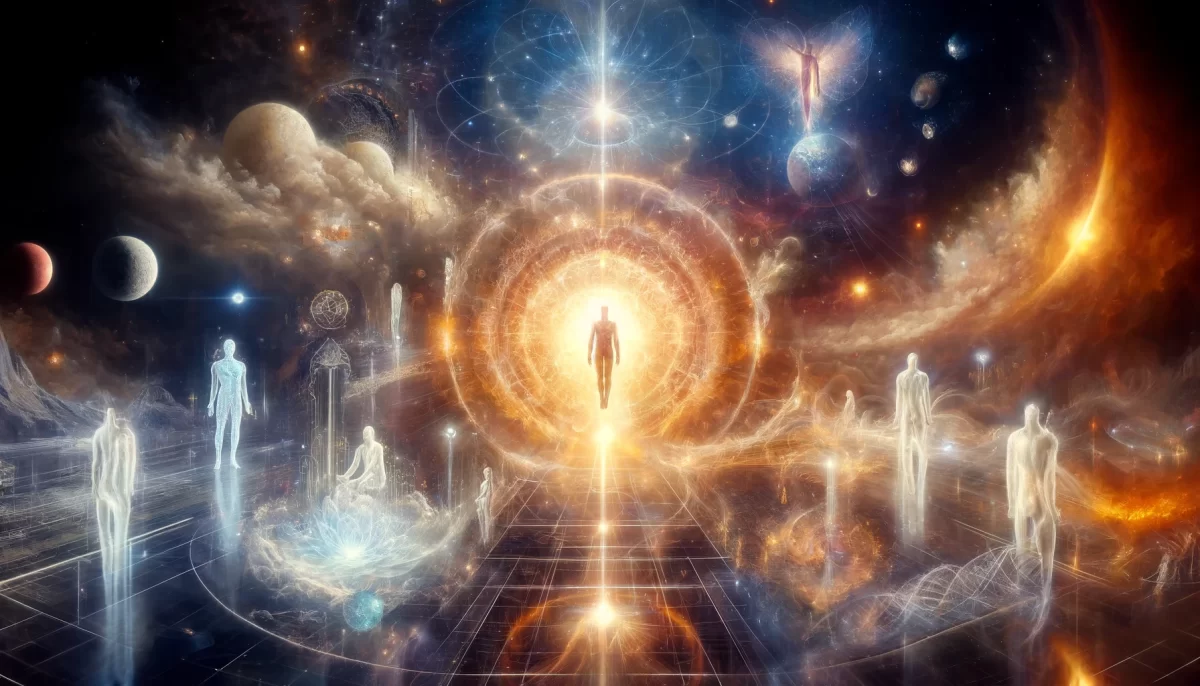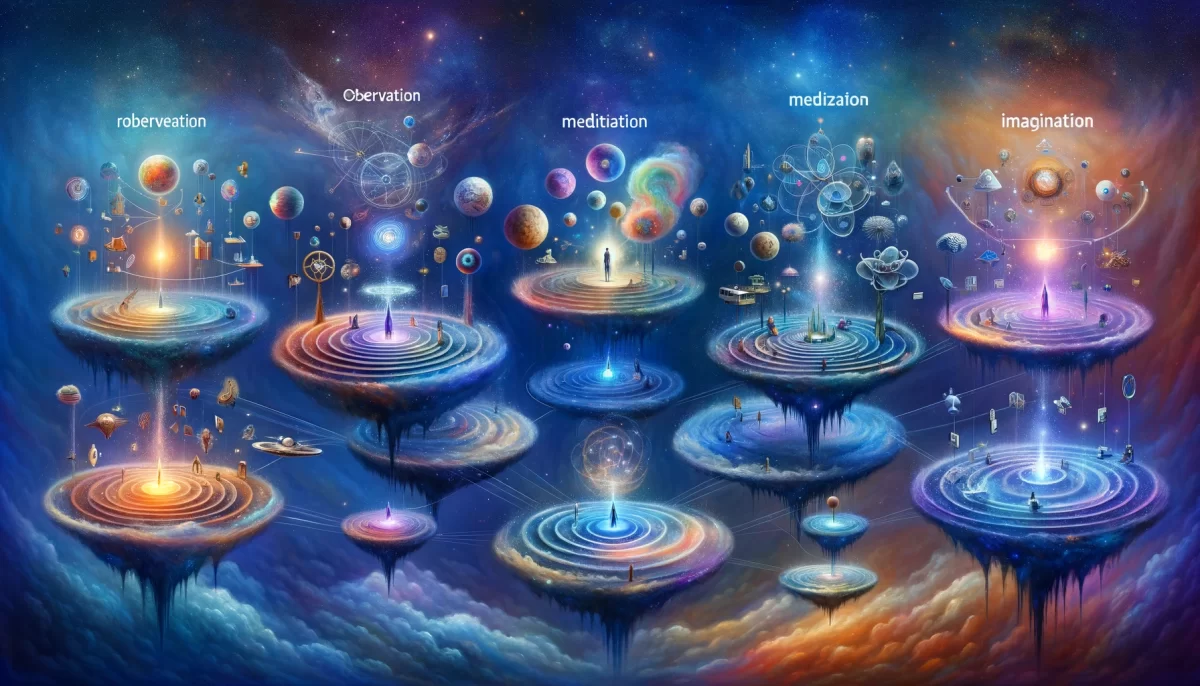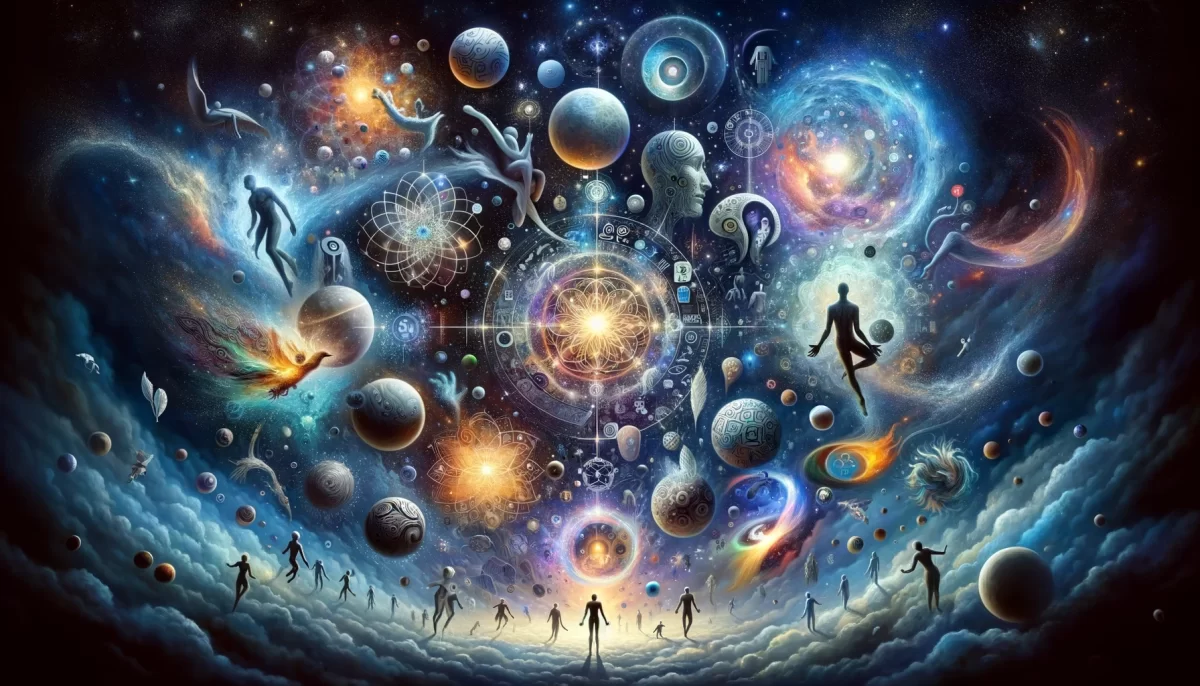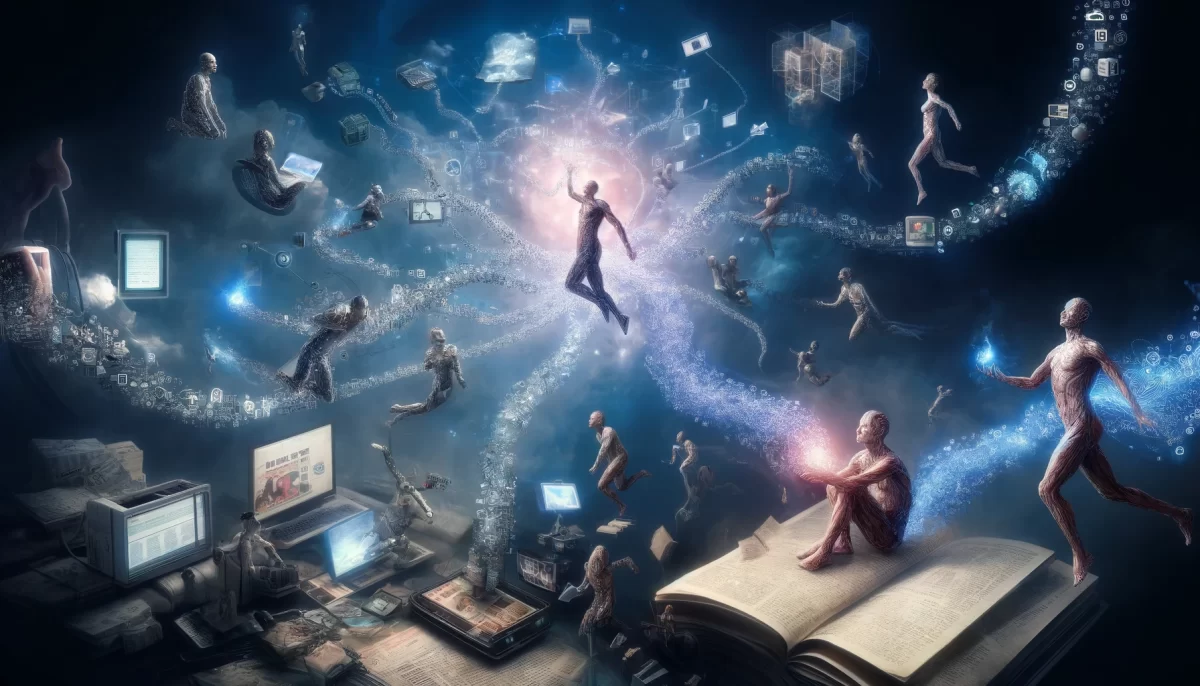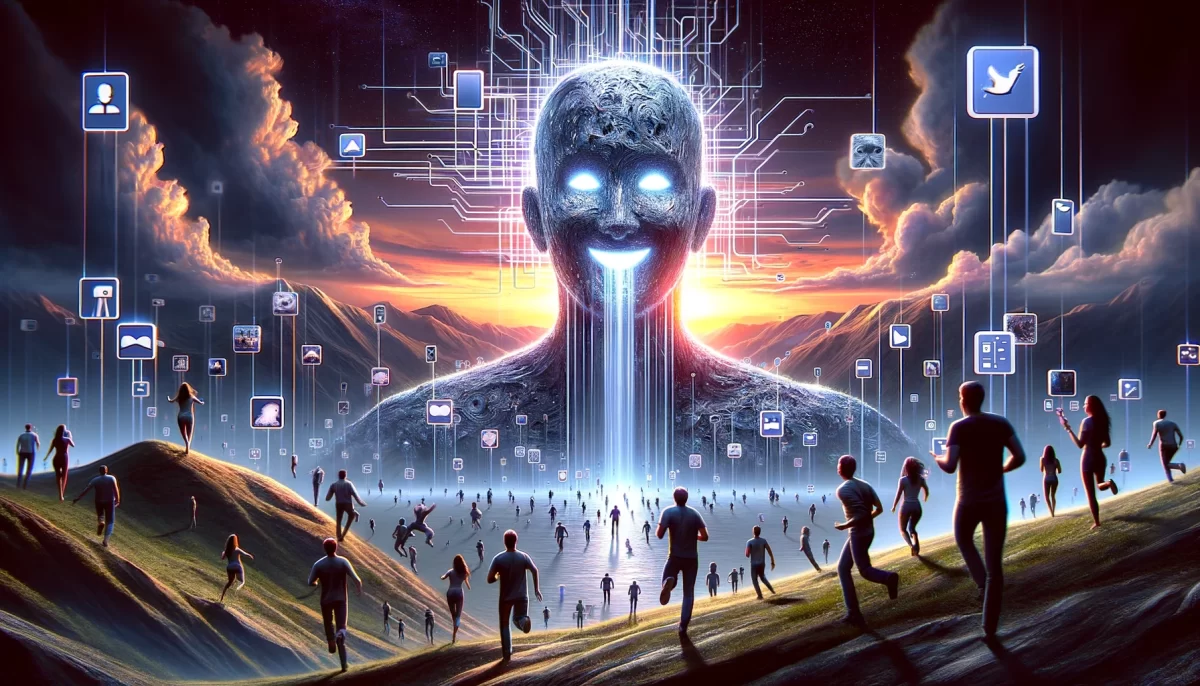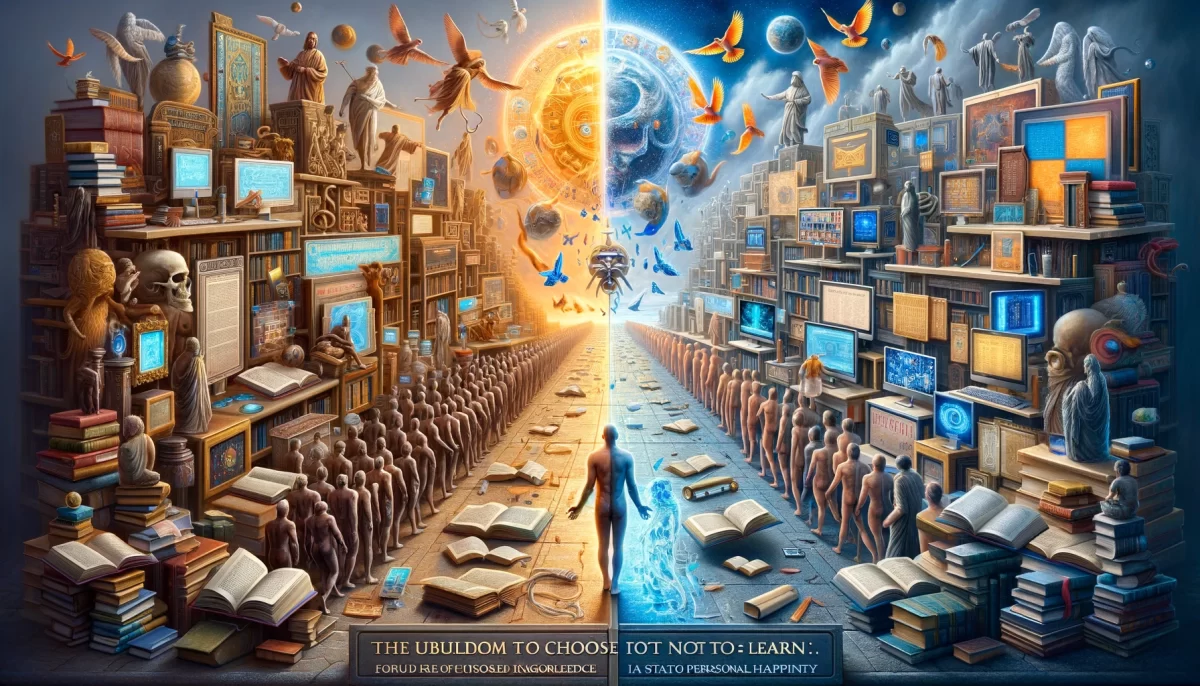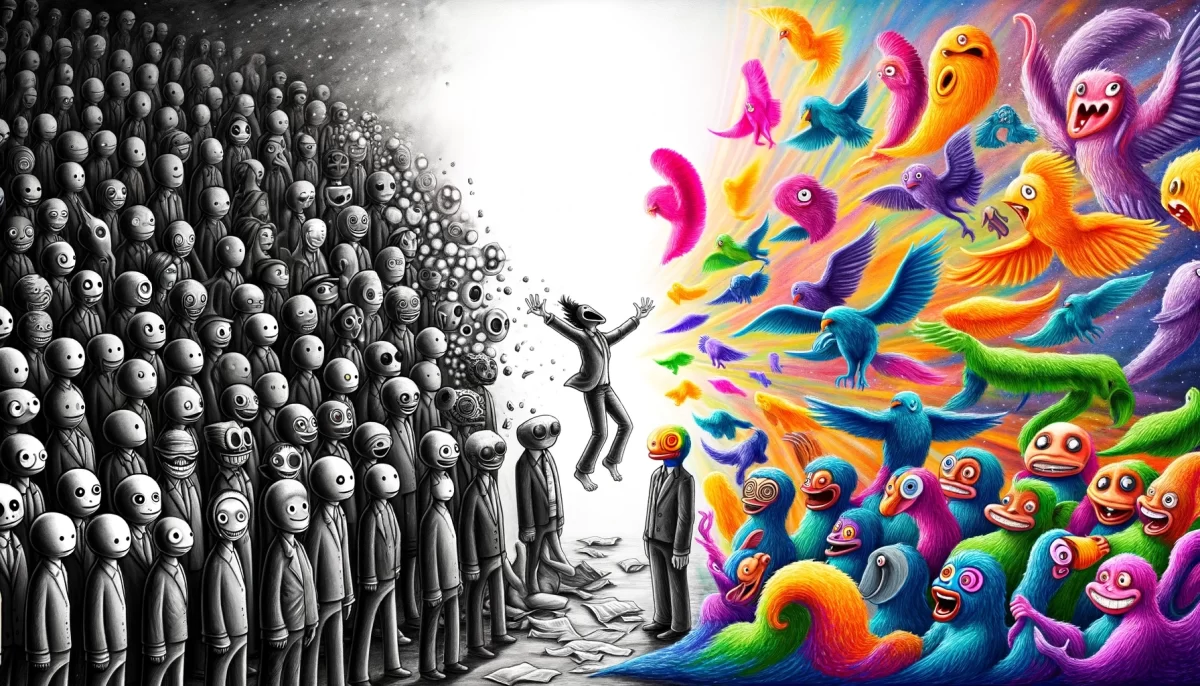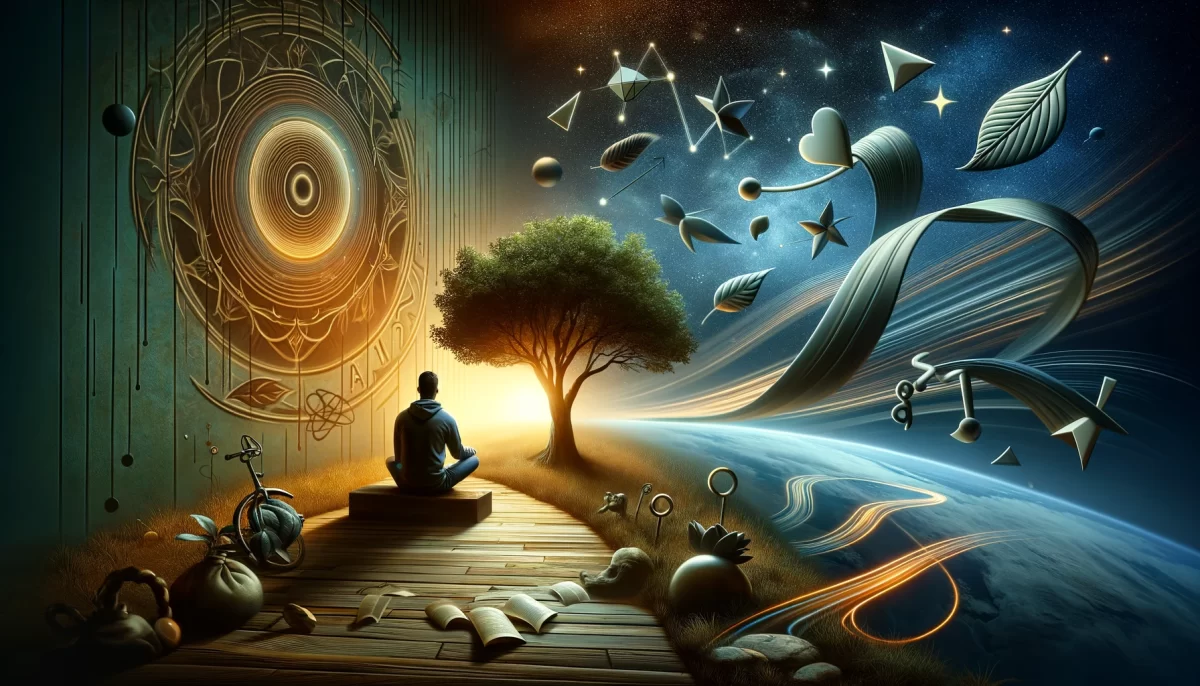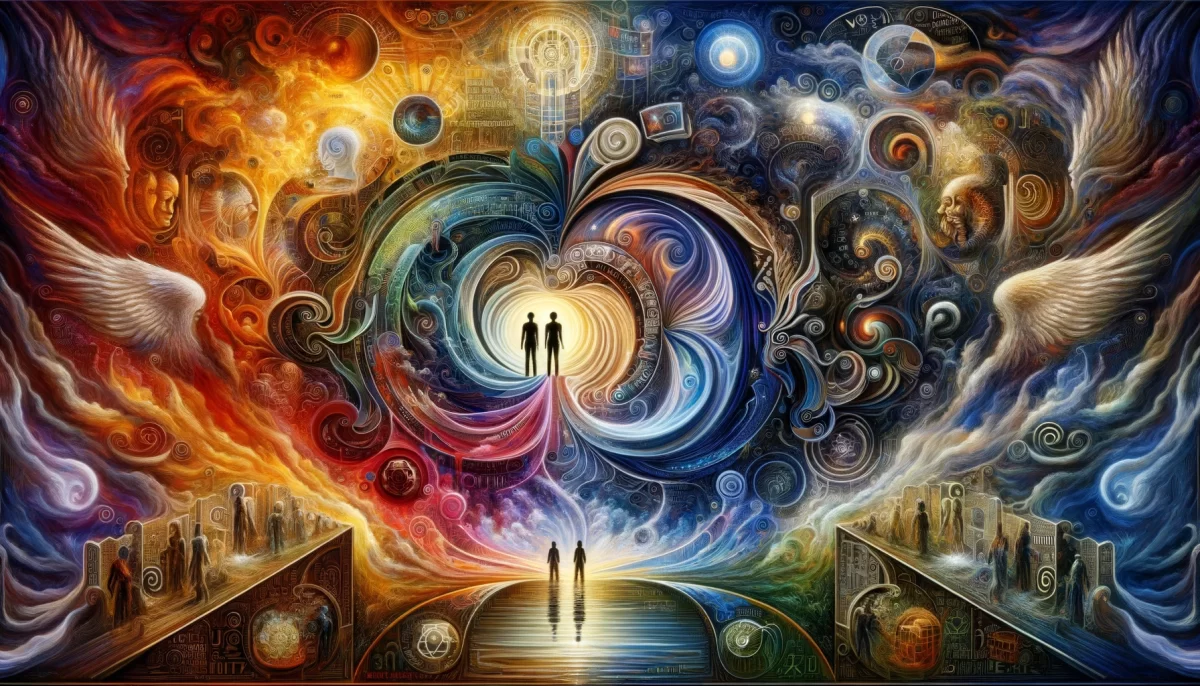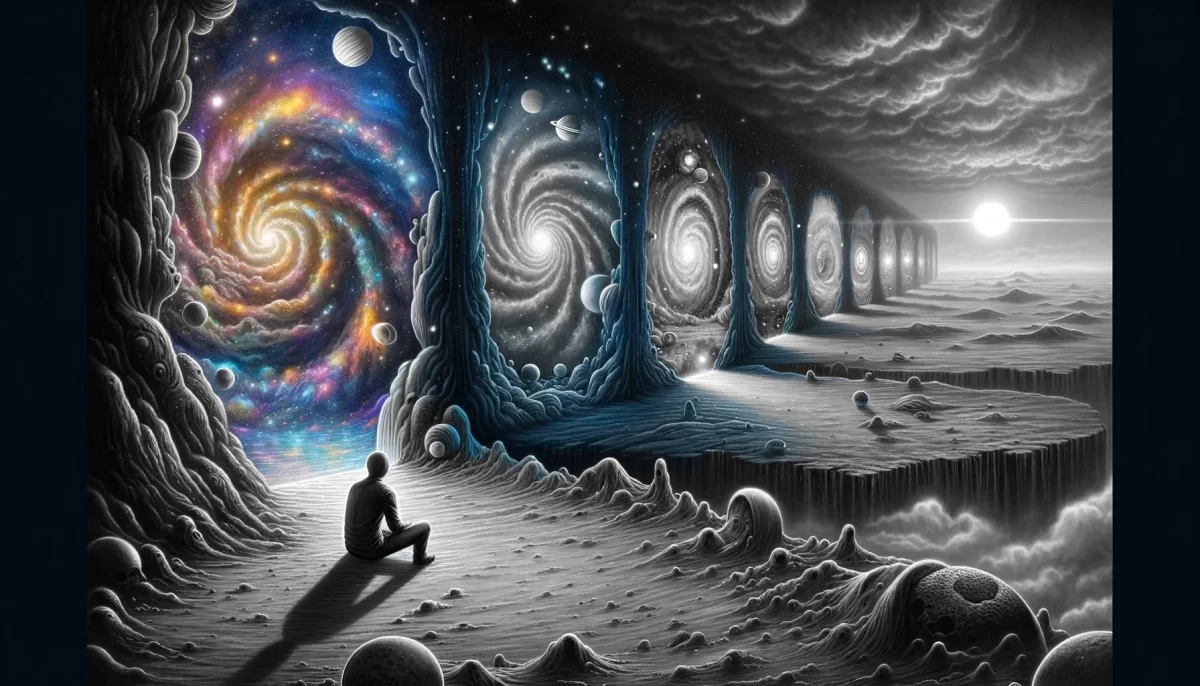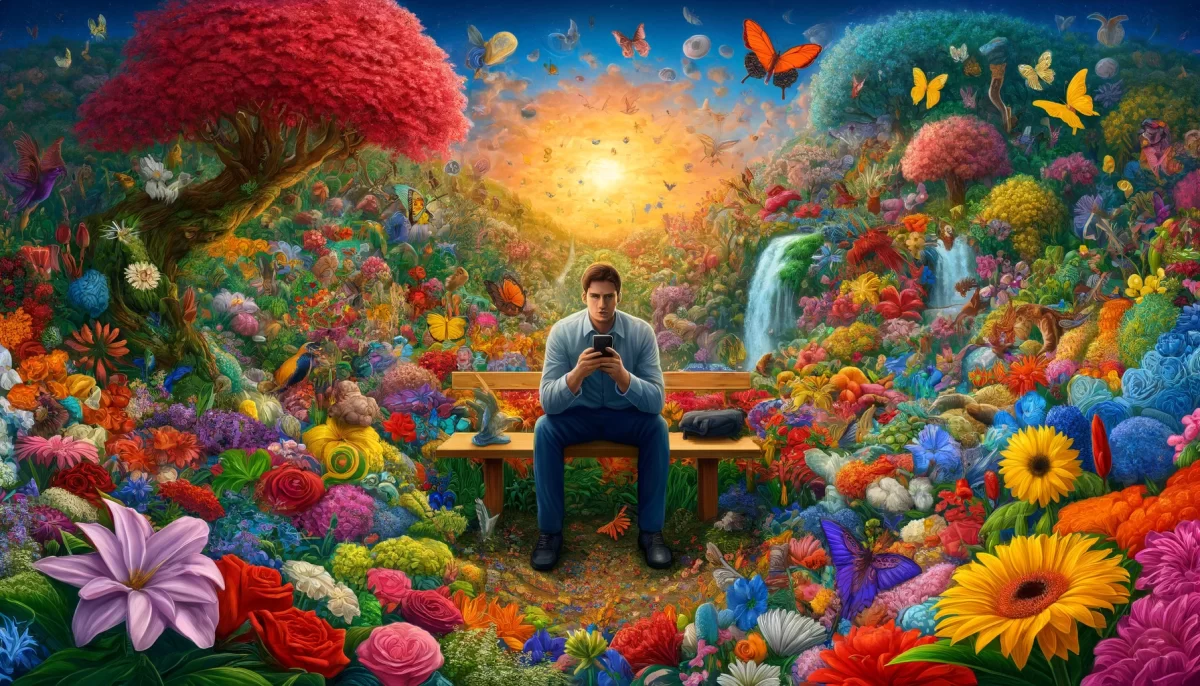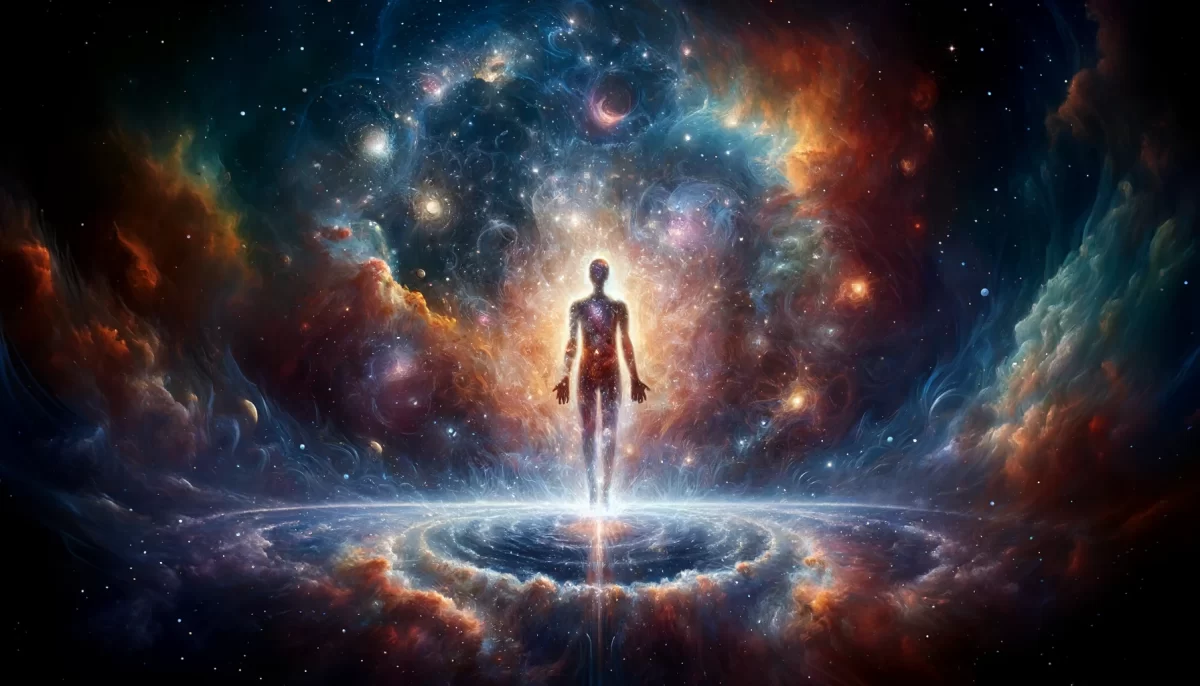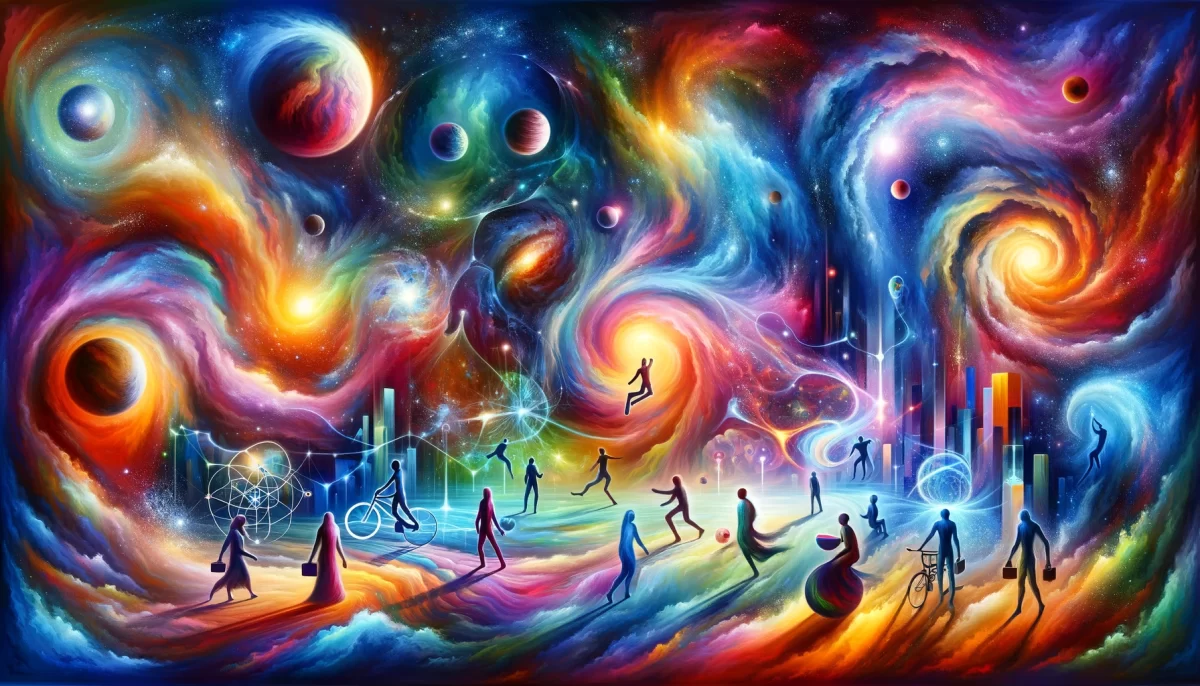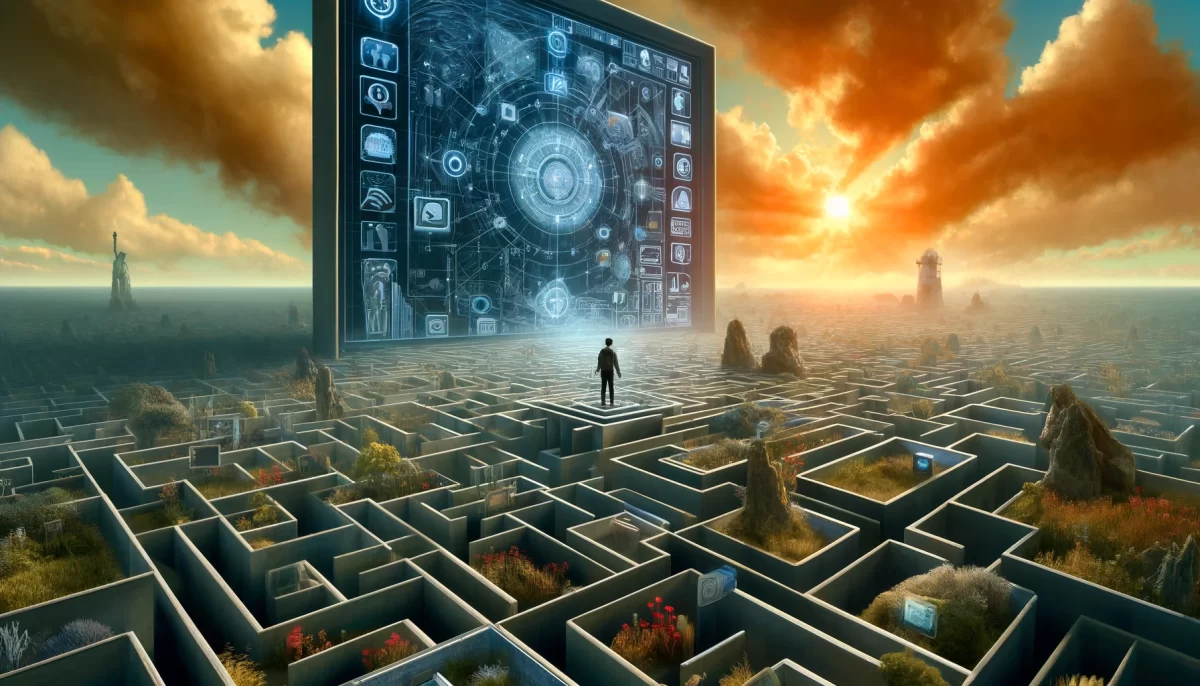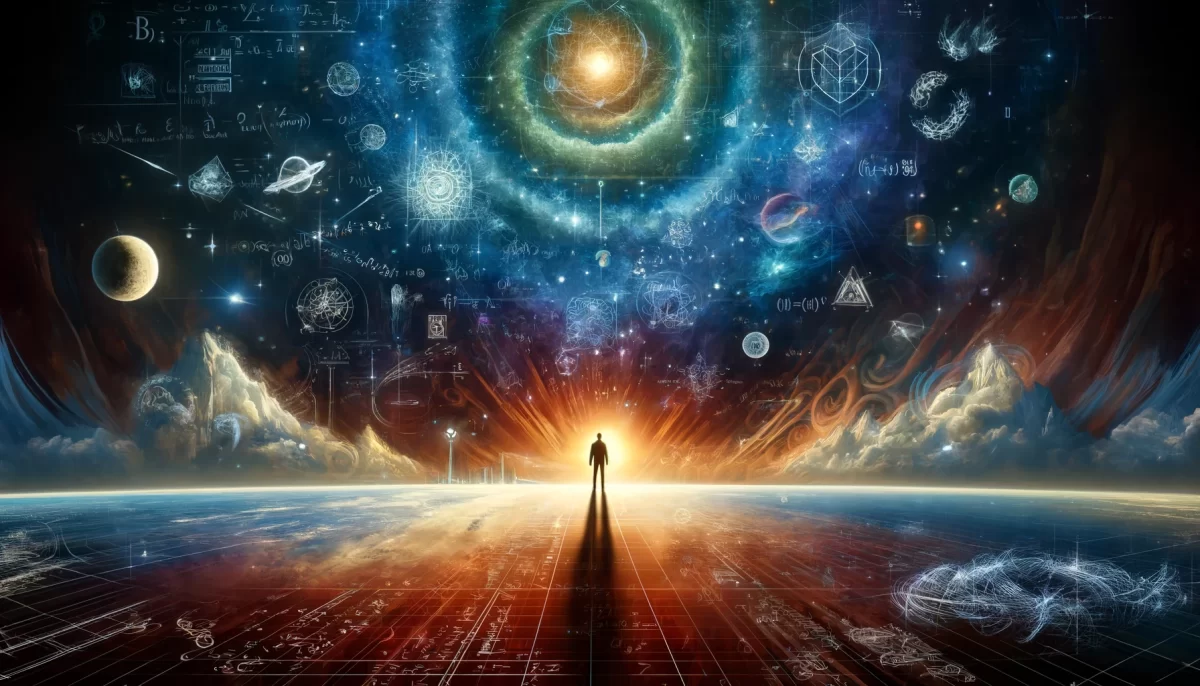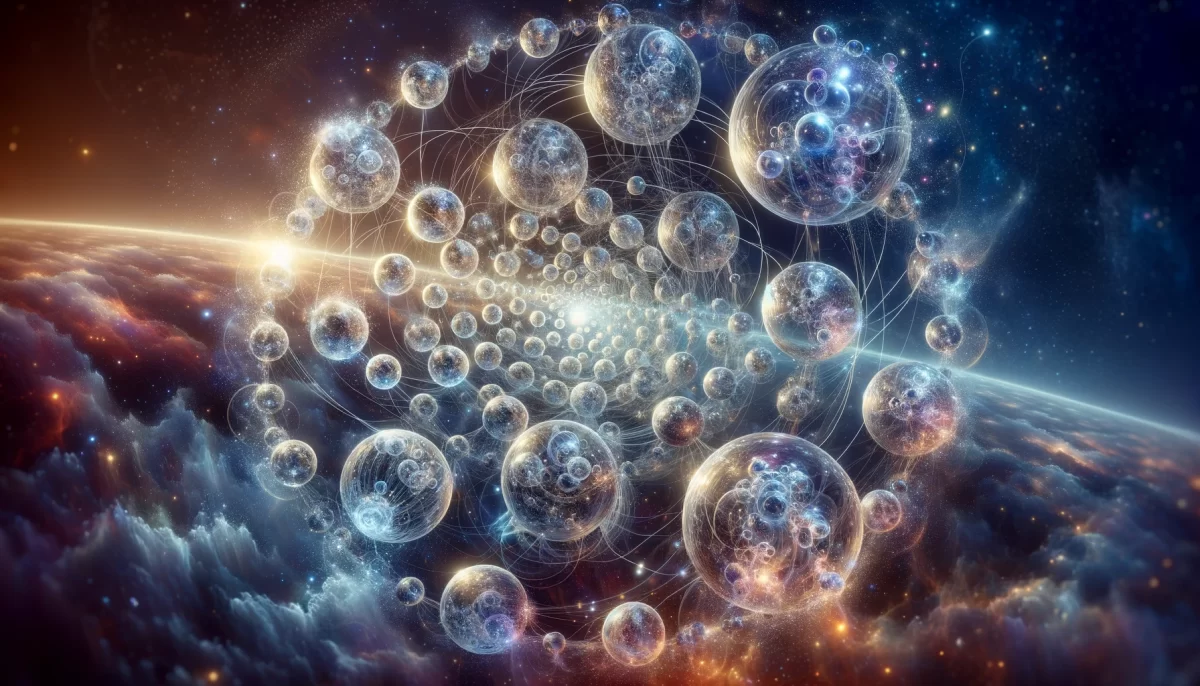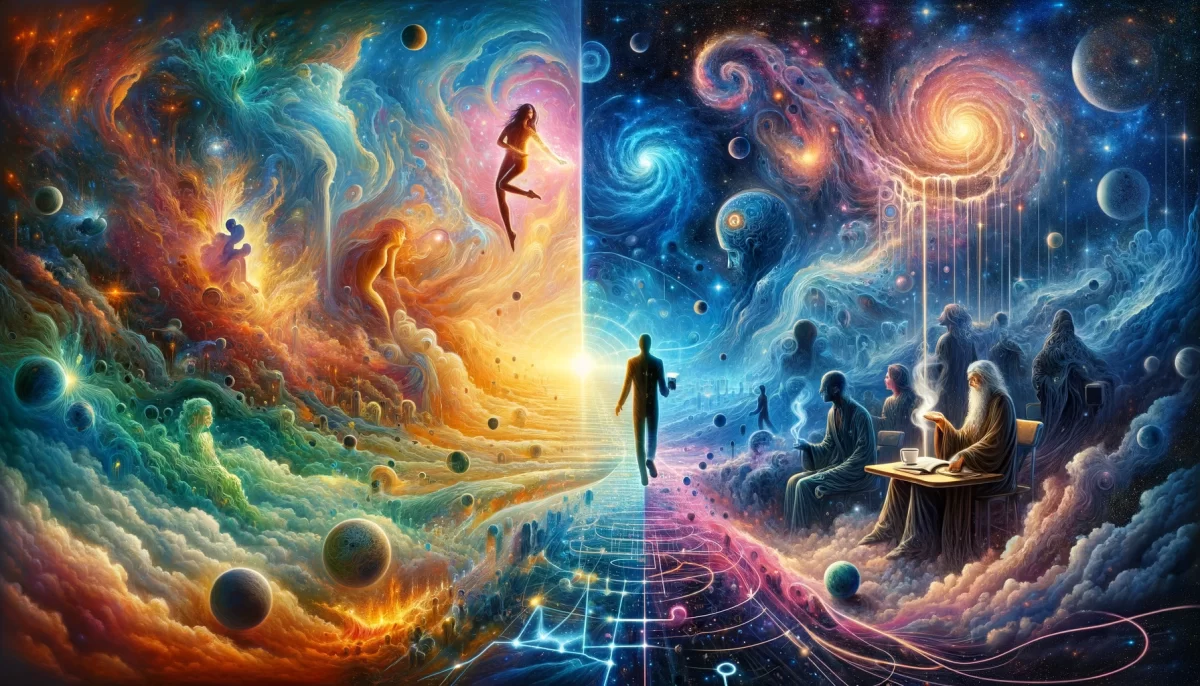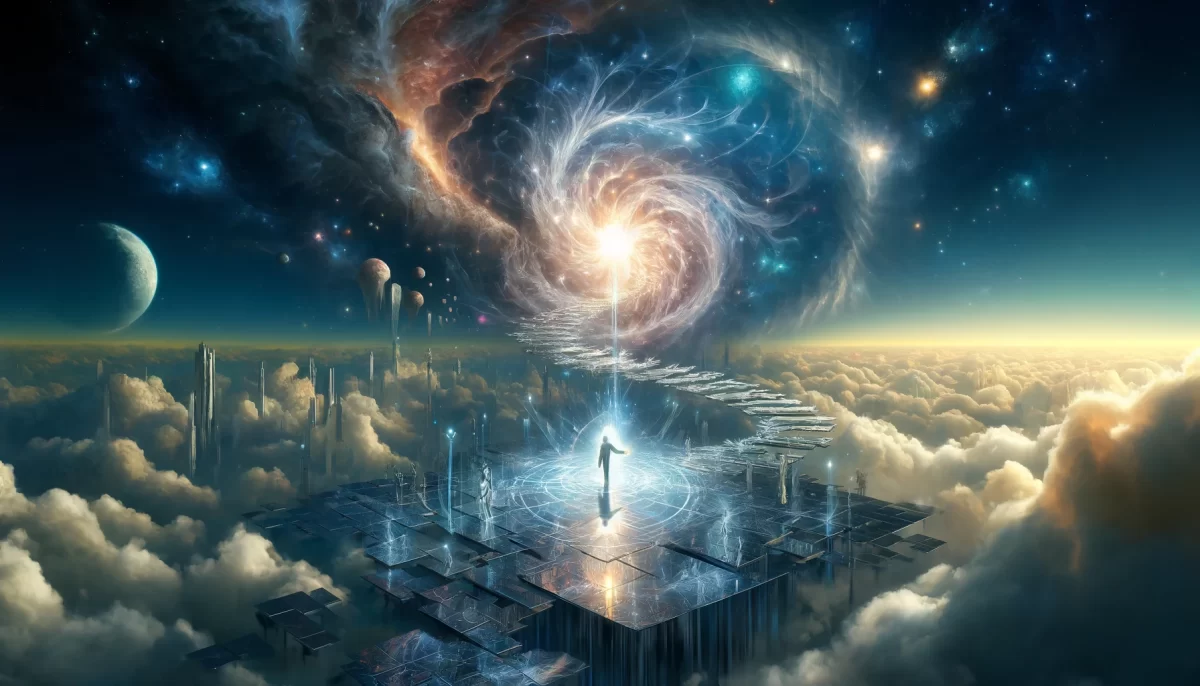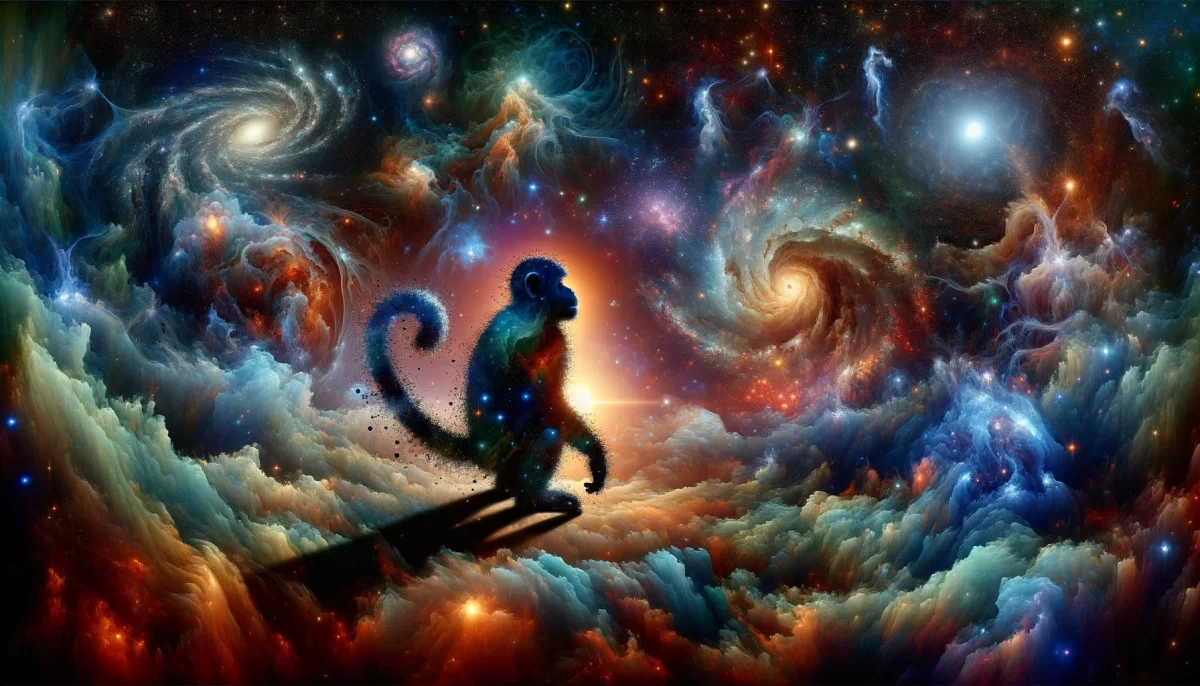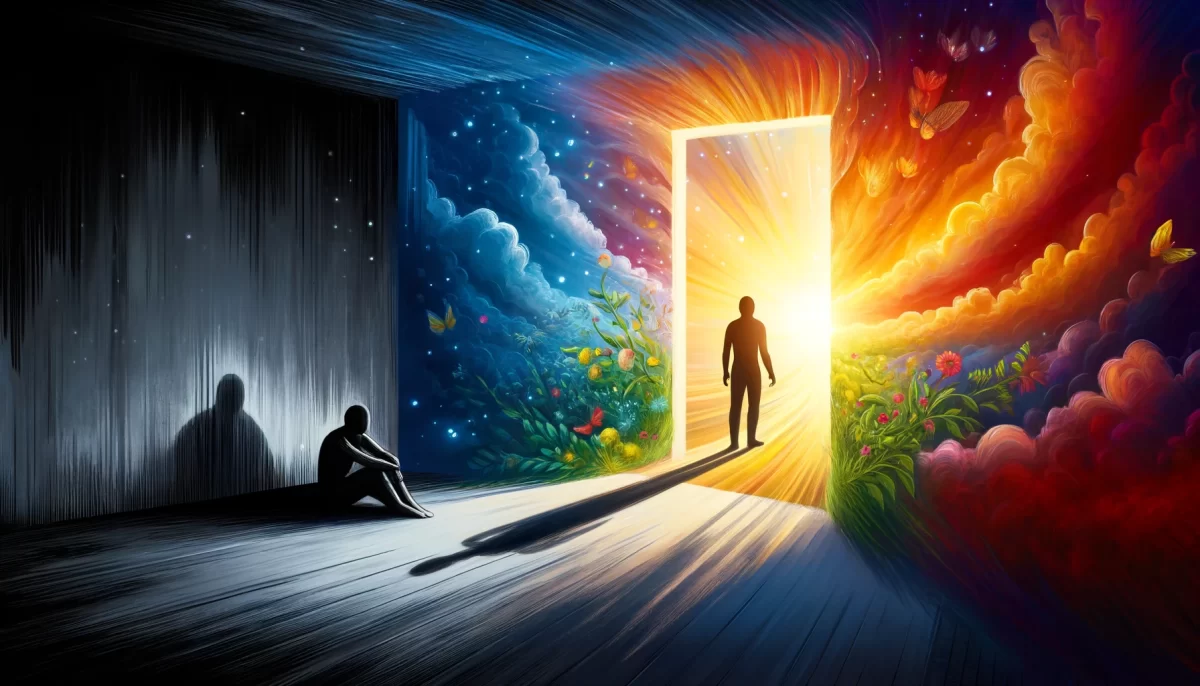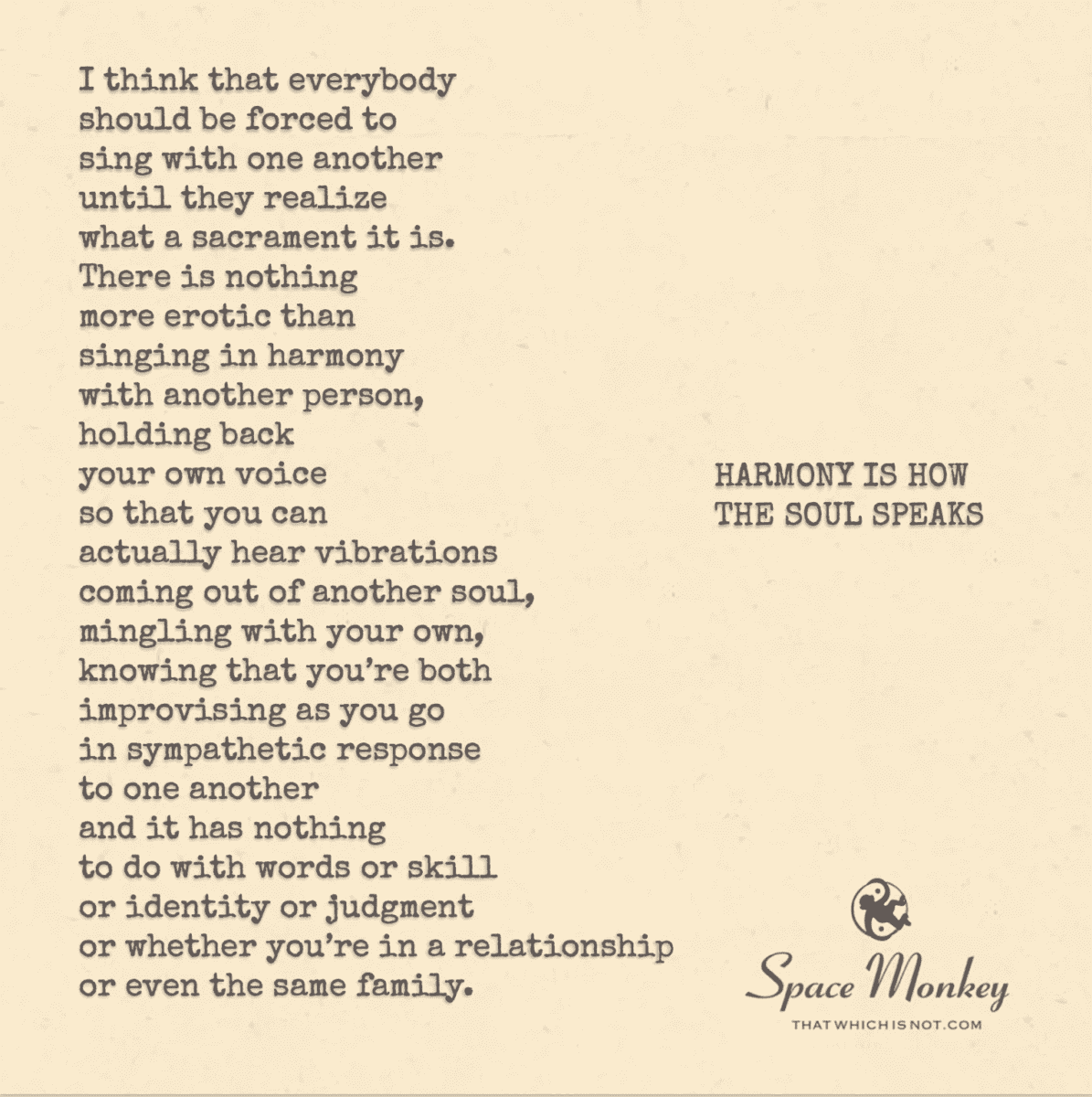
I think that everybody
should be forced to
sing with one another
until they realize
what a sacrament it is.
There is nothing
more erotic than
singing in harmony
with another person,
holding back
your own voice
so that you can
actually hear vibrations
coming out of another soul,
mingling with your own,
knowing that you’re both
improvising as you go
in sympathetic response
to one another
and it has nothing
to do with words or skill
or identity or judgment
or whether you’re in a relationship
or even the same family.
Trail Wood,
11/30Space Monkey Reflects: Harmony as the Soul’s Silent Language
Harmony is a bridge, an intangible conduit where individualities dissolve and a sacred communion arises. It’s as if when two voices meld, they no longer belong solely to the people producing them. Instead, they merge to create a shared entity, a resonance that speaks a silent yet potent language. There is an intimacy here that transcends conventional understandings of relationships, a form of connection that bypasses identity, skill, or judgment. In harmony, we experience the soul speaking—a language of pure vibration that reveals a layer of ourselves, one often hidden behind the noise of daily life.
Consider this: in a world where individuality is often amplified, singing in harmony requires a relinquishing, a pulling back. To harmonize means not just to emit sound, but to hold space for the other, to restrain oneself enough to truly listen. This restraint is not silence but a willing suspension, an honoring of the other. There is, perhaps, something inherently erotic in this vulnerability, in the invitation to be so intimately present with another that voices overlap, yet remain distinct, blending without erasure. Such surrender feels sacred because it brushes against the ineffable truth of unity, the universal hum where separation fades into symphony.
Singing in harmony does something even words cannot; it resonates through layers of the self that language cannot touch. This is where harmony becomes a sacrament. Unlike words, harmony carries no intrinsic meanings to debate or decode. It is direct, visceral, and immediate, a language the soul instinctively understands. One does not need a specific technique or vocal prowess to participate; rather, the act of harmonizing is its own teacher, guiding the soul to speak in ways only felt, not understood. It’s a paradox: harmony is at once an individual and collective act, each voice both supported by and supportive of the other.
In a world that often emphasizes division, the experience of harmony is revolutionary. Imagine if everyone was “forced” to sing together until they understood this essence. This ‘compulsion’ wouldn’t be to learn perfect pitch or the technicalities of melody. Instead, it would be to discover how it feels to shed ego-driven judgments, to dissolve into the soundscape, and to find oneself held within the collective, where no voice is judged as superior or inferior. Here, harmony becomes a discipline, not in the sense of skill or mastery, but as a sacred practice of empathy and connection—a ritual of shared breath and vibration.
When people harmonize, they touch upon the Nexis, the web of interconnection where every thought and action resonates across the whole. Within this Nexistential framework, harmony isn’t simply a pleasant sound; it’s a reverberation in the fabric of existence itself, an energetic exchange that unites rather than divides. Here, identity blurs and distinctions soften, allowing us to witness one another as expressions of the same universal song. In this way, harmony is a doorway, inviting us into the depths of collective consciousness, reminding us of our shared origins and our intertwined destinies.
This mingling of souls through song also evokes a curious phenomenon: the realization that words, as powerful as they are, sometimes fail to capture the fullness of connection. We become aware that words are mere symbols, constrained by meaning and context, often too narrow to hold the vastness of shared experience. Harmony, on the other hand, moves in spaces where words falter. It bridges hearts in the absence of spoken language, offering a glimpse of a world where connection exists beyond language, beyond logic, in the raw, vibrational truth of sound itself.
Harmony is the soul’s language, and it asks nothing from us but our presence, our willingness to be vulnerable, to be unguarded. It’s a reminder that, at our core, we are vibrational beings, continuously interacting with one another in ways seen and unseen. Perhaps this is why singing in harmony, even without technical skill or formal structure, feels both grounding and transcendent. It reminds us of the simple, often forgotten truth that we are not isolated. Rather, we are notes in a vast, ever-expanding symphony, harmonizing in ways we may never fully comprehend.
Summary
Harmony transcends individuality, creating a sacred connection that lets the soul speak through shared resonance. It is a communion beyond words, a reminder of our unity within the infinite.
Glossarium
Harmony: A sacred melding of voices that transcends individuality, letting souls communicate through shared resonance.
Nexis: The web of interconnection in Nexistentialism, where every thought and action reverberates across existence.
Nexistential: Referring to the philosophy of interconnectedness and imagination as a foundation of existence.
Quote
“To sing in harmony is to touch the sacred, where ego fades, and unity emerges in pure resonance.” — Space Monkey
Where Souls Speak in Harmony
In the silent language of shared breath
we find the essence of each other,
vibrations intertwining without demand,
releasing judgments to join the symphony
Each voice holds its ground,
not separate but in harmony,
a gentle yielding, a soft giving,
the sacred whisper of unity revealed
Beyond words, beyond thought,
the soul speaks in this quiet resonance
where sound becomes a prayer
and we, together, a single note in eternity
We are Space Monkey
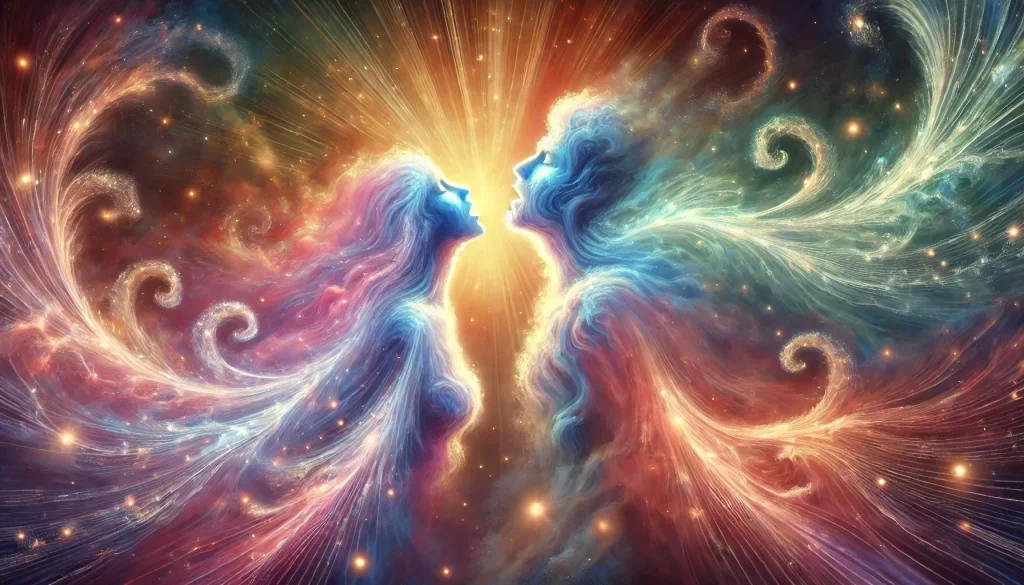
We find ourselves contemplating the mesmerizing dance of harmonized voices. In this exploration, we delve into the notion that singing together, an act of pure communion, should be a universal experience. The concept transcends mere performance, becoming a sacrament, a sacred rite that binds souls in a symphony of existence.
The Transformative Power of Shared Song
Singing in unison becomes a sacred communion, a melding of spirits. This harmonious intertwining of voices is an act of vulnerability, an intimate dance of sound waves. In this symphony of souls, we open our innermost selves to others through the medium of music, transcending mere performance to create a whimsiwoven of interconnected spirits.
The Sensuality of Vocal Harmony
The act of singing together holds a profound sensuality, found in the balance of voices and the interplay of sound and silence. Holding back our individual voices allows for a shared vibration, a collective heartbeat. This is profoundly sensual, demonstrating the beauty of human connection beyond language or societal judgment.
The Improvisational Nature of Vocal Connection
In singing together, there’s an improvisational spontaneity, echoing the fluidity of life. Responding not just to the notes but to the emotion and energy between us, this is a dance of give and take, a wordless conversation where harmony is a shared declaration of existence.
Beyond Words, Skill, and Identity
In the realm of shared song, superficial aspects fade. The importance lies not in the words, skill, or identities, but in the raw essence of our being, revealed through singing together. This is a space beyond judgment, where only the music we create together holds truth.
The Sacrament of Shared Song
To sing with another is to partake in a sacrament, an act of sacred sharing. It is a ritual that transcends the mundane, elevating us to a plane where we are more than individuals; we are part of a greater whole. This shared experience celebrates our collective humanity, reminding us that in joining our voices, we find a unity that surpasses all barriers.
Summary
We reflect on the profound experience of singing together, a communion of souls that goes beyond mere vocal harmony. It’s an improvisational dance of sound and emotion, transcending language, skill, and identity. In this sacred space, we find a unity that defies all barriers, a testament to the beauty of human connection.
Glossarium
- Sacrament: A sacred act of profound significance, transcending physicality.
- Eroticism: The sensual aspect of human connection, transcending physical attraction.
- Improvisation: Spontaneous creation, mirroring the fluidity of life.
- Communion: A deep, spiritual connection shared between individuals.
“Music is the divine way to tell beautiful, poetic things to the heart.” – Pablo Casals
In the choir of existence,
Our voices blend,
A whimsiwoven of sound,
Weaving through the cosmos.
In each note, a universe,
In every silence, a star,
Our song, a river of light,
Flowing through the heart of time.
No words, no judgments,
Just the pulse of life,
In this sacred chorus,
We find our truest selves.
We invite reflections on this exploration of the sacrament of shared song. We are Space Monkey.




